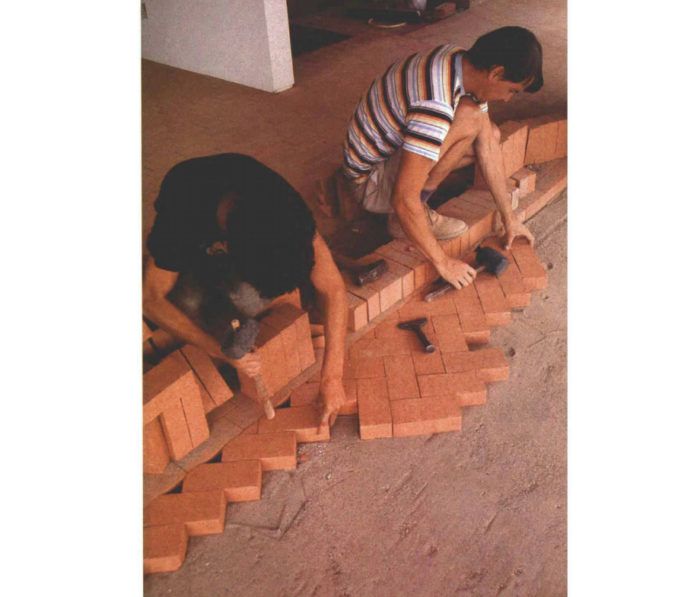Brick Floors
How a New Mexico pro lays a brick floor without mortar or string lines.

Synopsis: This is a guide to laying several styles of brick flooring. The author, a New Mexico contractor, advocates a casual setting style that yields a floor with a handsome, hand-set look. He covers preparation, brick selection, and setting techniques. A sidebar explains how to cut brick with a chisel and hammer.
Brick floors are common in adobe houses here in New Mexico. The deep-red earth tones typical of bricks and their slightly erratic dimensions fit right in with adobe houses. But these aren’t the only structures in which I lay brick floors. Some clients want them because they make good heat sinks in passive-solar homes or good radiators in buildings with buried hot-water radiant-heating systems. Still other clients want them because of their looks. After all, one of the most popular sheet-vinyl patterns imitates the look of a brick floor, and the installed cost for the two materials is roughly the same—about $2 a square foot. I do point out to my clients that the two materials wear at different rates. A vinyl floor will probably need replacing in 20 years. But after 20 years the corners which stood a bit high in a new brick floor will be nicely rounded, and if it’s been properly finished it will have a patina like a well-used banister. In heavy traffic areas some thickness will be worn away, leaving another 14 centuries of wear in those places, give or take a century or two.
Choosing the bricks
The phone book will tell you where bricks can be had in your area, and I strongly suggest that you visit each yard to assess the quality and price of the available bricks. Check the bricks for chipped corners and variations in dimensions. Up to 5% chipped corners is typical. If their dimensions fluctuate too greatly, you’ll be spending an inordinate amount of time fitting them together.
We are fortunate to have a local factory that makes an inexpensive low-fire brick suitable for interior use. Most of the brick manufacturers make their pavers (bricks without holes) for exterior use, which means the bricks have to be fired at higher temperatures. This makes them resistant to water so they won’t spall when they are exposed to a rain followed by a freeze. Not surprisingly, high-fire bricks are more expensive than their low-fire counterparts because it take more time and gas to cook them. Around here, you can count on spending $0.30 to $0.50 apiece for high-fire bricks.
The brick you choose should have a smooth surface (roughness is a maintenance problem) and a pleasing color. Dark bricks will absorb more energy from the sun when they are used for solar gain. My favorites are light red or orange, and I keep in mind that the color will darken a little when the bricks are sealed.
Your supplier can tell you how many bricks you will need if you can tell him how many square feet you want to cover. If you want to calculate this number yourself, figure that to cover 1 sq. ft. it takes 4.5 bricks that are 4 in. by 8 in., or 5.2 of the 3-5/8-in. by 7-3/8-in. bricks. I add 5% to the total to allow for waste, and slightly more for a herringbone pattern. These figures are for bricks that are laid tightly together, without mortar joints between them.
For more photos and details, click the View PDF button below:
Fine Homebuilding Recommended Products
Fine Homebuilding receives a commission for items purchased through links on this site, including Amazon Associates and other affiliate advertising programs.

Anchor Bolt Marker

Plate Level

Smart String Line


























